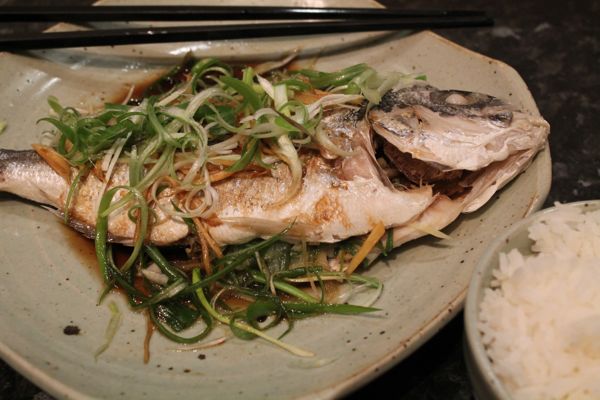We’re going to wok down to Electric Avenue
By Regine Lee
It is a true story that eight years ago, when he was scoping out areas to live on his return to London, my husband chose Brixton largely because of the Chinese grocery store on Electric Avenue. A keen cook, he initially he did this for his own convenience. However, his foresight became apparent after we were married, as it transpired that there a probably isn’t a better way to prevent me from flight risk. A Chinese-American girl originally from the San Francisco Bay Area, I arrived in London several years ago and landed straight in Brixton to be with Adam. Coming from a place where Chinese shops, language schools and restaurants are part of the social fabric, having a grocery store selling my peoples’ food in the neighbourhood was seriously comforting.
Nowadays, I don’t think I could bear moving away from Brixton, and away from the Wing Tai. In addition to Chinese staples, if you ever want to cook anything from the Asia-Pacific region, it’s never failed to supply what you need. Their tightly packed shelves of bottled sauces, spices, noodles and vegetables provide easy inspiration for making Korean, Japanese, Thai, Malaysian and Vietnamese food.
However, what’s on my mind as we head towards the end of January is Chinese New Year. The lunar year of the horse falls on the 31st, and like always, we’ll gather the relatives and devoutly celebrate a holiday centred around gluttony. As the most important holiday of the year, Chinese New Year is a time where everyone pulls out the stops and loosens their belts.
Whereas all across Britain during Christmas families mostly have the same dishes like turkey, sprouts, and stuffing, different parts of China cook significantly different things for Chinese New Year. The Chinese are a superstitious lot though, so there are common traditions when it comes to cooking with certain ‘lucky’ foods. Things that are round and shaped like ancient Chinese circular coins often grace the table, like tangerines and dumplings. Puns are also sprinkled throughout the Chinese culinary canon. Common Chinese New Year ingredients have names that sound like auspicious words: ‘abundance’ (fish), ‘fortune’ (sticky rice cakes), and ‘prosperity’ (an edible black moss resembling and tasting a bit like wet hair). Owing to the unavailability and slight gag factor of the moss, I’ve kindly provided recipes for the first two ingredients only in this article!
These recipes are quick and actually very easy to make. All the ingredients can be found in Wing Tai or Brixton market – the essence of my family’s Chinese New Year table right around the corner from the Tube.
Steamed whole fish with ginger and spring onions
If eating fish is lucky, cooking the fish whole is the most auspicious thing you can do with it. Chinese reasoning would ask: why would you want to fillet your abundance into pieces?
If you don’t have a steamer or your fish is too big for one, roast the fish in a baking dish covered with foil and with a little water and vegetable oil on the bottom of the dish (roast for 200 C degrees for about the same time)
Serves 2-3 as part of a meal
- 1 whole fresh, white fish such as bream or bass, scaled, gutted and cleaned
- 1 large knob of ginger, about 3 inches long and sliced into matchsticks
- 2 spring onions, sliced into matchsticks
- 2 tablespoons ‘seasoned soy sauce for seafood’ (such as Lee Kum Kee brand)*
- 1 tablespoon vegetable oil
You’ll need a large steamer or wok with a raised metal trivet.
- Clean and rinse fish inside and out, stuff its cavity with half the spring onions and half the ginger.
- Steam the fish in the steamer for 20 minutes, or until flesh is firm and completely opaque. If you’re using a wok, put a raised metal trivet on the bottom of the wok and fill it with water until just below the top of the trivet. Put the fish on a plate and then place the plate on the trivet. Cover it with the lid and heat the water until it boils, making sure the water doesn’t dry up.
- When the fish is done, in a small pan heat the soy sauce, vegetable oil and remaining ginger until it starts to boil.
- Remove fish from steamer, put on a plate. Top with remaining spring onions and pour hot soy sauce/oil/ginger mixture on top of it.
Serve with steamed white jasmine rice and stir-fried Chinese greens.
*Seasoned soy sauce for seafood is basically light soy sauce with a little sugar dissolved into it. As a substitute, dissolve about 1/8 teaspoon of caster sugar in 2 tablespoons of regular light soy sauce in step 3.















Thank you, you have inspired me to go back and visit this shop that I had forgotten was there. I went years ago, and as you say is a treasure trove of all things for eastern cooking